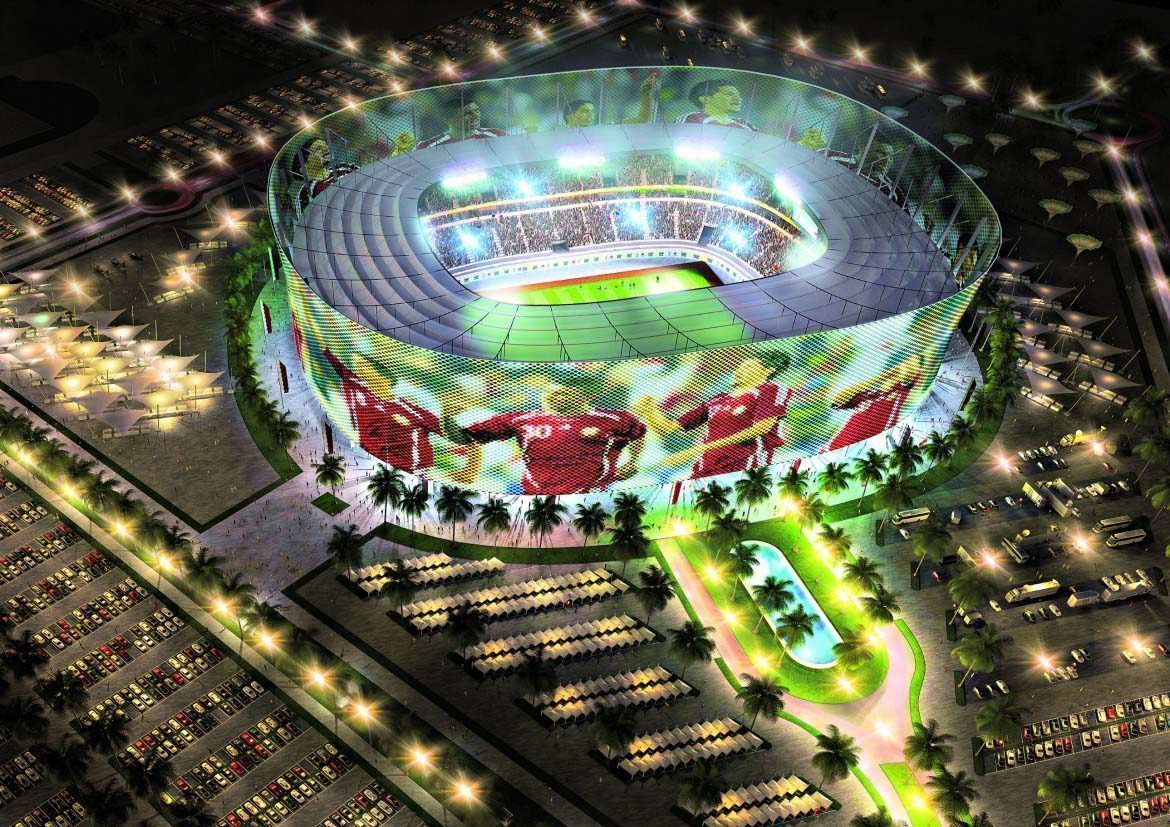Al Rayyan stadium demolished ahead of rebuild as Qatar World Cup venue

Qatar has finished razing Al Rayyan Stadium, reusing or recycling some 90 percent of its construction materials, and is now planning to go ahead with its reconstruction as a venue for the 2022 World Cup.
The stadium is expected to be completed in 2019. However, its final design has yet to be revealed. According to a spokesman for the Supreme Committee of Delivery and Legacy (SCDL), this will be done “soon.”

The design unveiling had previously been scheduled for Qatar National Day (Dec. 18) last year, but then was postponed at the last minute. Speaking to Doha News, the spokesman did not give a reason for the delay.
The stadium, which was the second to be announced as an arena for the 2022 tournament, is going to be built from scratch on the existing Al Rayyan site, with an increased capacity of 40,000 spectators, double the former arena’s space.
After the World Cup, a top modular tier will be removed, reducing capacity back to 20,000 fans. The tier is expected to be sent out of Qatar to provide football facilities in developing countries.
Nearly all of the construction materials used in the old stadium have been put to new uses, the SCDL said in a statement.
Recycled and reused
For example, wooden doors, windows frames and windows have been repurposed for use in staff accommodation and site offices. Staff housing has also been equipped with old light switches, electric sockets and plumbing fixtures and fittings.

Reinforcement bars, cables, trays, flags and piping have been used by the SC’s arts and culture department for artwork, concrete was crushed and stored for future site leveling works and topsoil has been stockpiled for future precinct landscaping works or sold on.
Reinforcement bars and other metal items are being recycled by Qatar Steel, while the SC said scrap timber would be recycled by licensed centers.
Initial plans for the stadium had been to refurbish the existing design, but in October last year, the SCDL announced that the arena would instead be razed and rebuilt.
Design reveal
Though plans for the final design have yet to be confirmed, the new stadium is expected to incorporate modern amenities such as a social club, cricket ground, trails for running or walking and other facilities.

At the time of bidding for the World Cup, initial renderings of the stadium showed it wrapped in an over-sized digital display board, showing scores, photographs and other information.
But as has happened with other stadiums, the final design could change. The SCDL would not confirm whether the display board feature would be incorporated into the final plans.
The contractors responsible for redeveloping Al Rayyan Stadium were announced last year as Manco International General Contracting W.L.L., a joint venture between Manco W.L.L and Buckingham Group Contracting Ltd.
Other arenas
So far, eight stadiums have been confirmed as venues for the World Cup, although final designs have only been released for four of them. Al Wakrah stadium, designed by architect Zaha Hadid, was the first to be confirmed, with completion set for 2018.

Other venues with confirmed designs include Al Bayt stadium in Al Khor, Khalifa Stadium in Aspire Zone and the Qatar Foundation arena in Education City.
Stadiums are also expected to be built at the current site of the Qatar Sports Club near Dafna and near Hamad International Airport. The opening ceremony and final match will be played in Lusail Stadium, which will be the event’s flagship arena and which is being designed by the firm led by British architect Sir Norman Foster.
The SC has yet to reveal the final plans for these venues.
At the time of bidding for the World Cup, Qatar said it planned to have 12 stadiums. However, FIFA regulations only require a minimum of eight, and it is expected that Qatar will scale back accordingly.
Previously, FIFA’s executive committee was expected to make a decision on the number of venues at its meeting earlier this month.
That did not take place, with attention instead focused on confirming that Qatar would host the tournament in the winter instead of the summer, with the final to be played on National Day (December 18).
Dohanews.co




